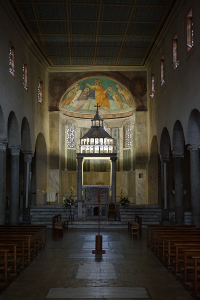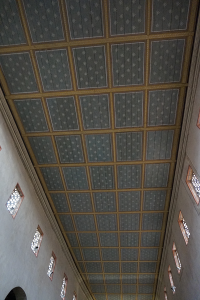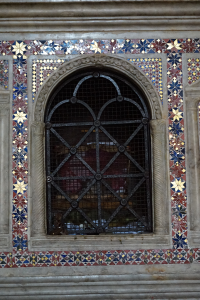Rome Gem II

San Giorgio in Velabro
This church is not as popular as some of the others dotted around the city. However, this is a very special church. To find this beautiful location, look for the Giano Arch (Arch of Janus), and in the shadow of Palatine Hill . Once there, this little church will lie right behind. Legend has it that location is where Rolmulus and Remus came ashore to be picked up by the she-wolf. Later this location was used for the cattle market for the Romans. Though it isn’t clear exactly, this site may have been one of (if not the very first) the first Catholic churches ever created.
Enter through the campanile that is slanted as well because of the street. This makes it really interesting to take a picture that won’t make you feel like you’re on a slant. Inside here, find different pieces of marble handing along the wall.

Once you enter, notice that you need to step down, and even off to the side, there is an area that is lower even still. This indicates that the streets have been raised even since the church has been built. These lower floors show the true floors of the church and paints a better picture of what the church really looked like.
Inside, this church is a mesh of colorful marble pillars, with different heights, and early paintings. It gives visitors the earliest ideas of what basilicas once looked like. After time passed, basilicas became bigger and bigger. However, they started much like this design. The church captures people with its early simplicity in artwork, and design that is quite different. The building, rather than being a rectangle or basilica design, it has more of a trapezoid shape. It helps to shift attention toward the alter. However, this is quite unusual to those who don’t expect this. To create this building, constructors had used different column pieces around the area.

Near the alter of the church, there lies a beautiful fresco that was created between 1295-1343. Most of the church is bare of striking images, so this alter fresco is going to grab your attention. Nearby, lie the relics of St. George in the protected metal grill. Theses relics were brought here by Pope Zacharius in 749 AD.
This church, though simplistic, has so much history that is still a mystery to people, and so little well known. Because of this, it is a beautiful discovery within Rome.